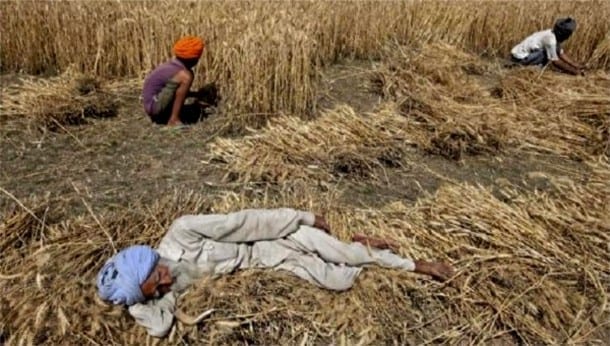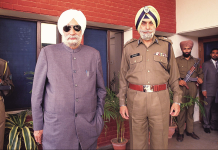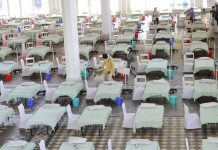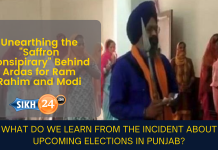


PUNJAB, India—India: host to Bollywood, spirituality, and one of the seven ancient wonders of the world. From the snow-dusted Himalayas in the North to the sultry sun-washed beaches, backwaters, and forests of the South, India is a land of abundant beauty. Scattered throughout the country are temples finely carved with depictions of Hindu gods and goddesses. Home to more than a billion people, India “pulsates with a spectacular mix of people, traditions and landscapes,” according to Lonely Planet. Flaunted as a success story of neoliberal development, the economy continues to grow and the state remains stable, despite India being an intensely pluralistic society. More than 700 languages are spoken; Hinduism, Islam, Christianity, Sikhism, Jainism, Zoroastrianism and Judaism are only a sample of the many religions practiced in the country.
However, development has not been equal for all. Many minorities face consistent repression by a strong but violent state. Women of “untouchable” class continue to be subjected to forced sterilization. Protesters and union and other work-place organizers continue to be imprisoned. Indigenous people are violently evicted from their homes to make way for mines and dams. Rising nationalism has even led to the famous Indian cricketer, Amir Khan, to speak out against increasing intolerance.
The levers of power (both regional and national) in India have long been in the hands of a political elite. Political influence is bought by the economically privileged and the result is all too predictable: tax exemptions and havens, land concessions, cheap credit and subsidies on electricity and water for the wealthy; malnourishment, precarious (and often dangerous) work from a young age, and a lack of access to basic healthcare for the poor. Oxfam estimates that if India stemmed the rise in economic inequality, it could end extreme poverty for 90 million people by 2019. Yet, the likelihood of it doing so is slim.
Every year, more than 2,000 farmers in Punjab kill themselves to escape the shame of chronic debt. In the past 20 years, up to 40,000 farmers have taken their lives. Many of their families are left destitute, receiving no state support. Punjab was at the forefront of the Green Revolution, a movement in the 1960s to modernize agriculture with more intensive use of fertilizer and pesticides, and mono-cropping. The Green Revolution has had profound environmental, economic and social consequences.
Pesticides and mono-cropping have depleted micro-nutrients in the soil. Farmers have experienced reduced crop yields, resulting in lower incomes. Large multinational corporations advocated the use of hybrid and GM seeds, which need to be repurchased every year. This has increased costs for farmers. In the past, conventional seeds were harvested for subsequent seasons. Those same pesticides and GM crops were manufactured by the multinationals that lobbied for the Green Revolution. The new agricultural design forced many farmers to turn to credit; firstly to pay for the adaptation to industrial farming and then to help farmers meet their basic needs as crop yields fell.
Many of the social consequences were foreseen in the 1960s. A resistance movement led by Punjabi Sikhs, which explicitly resisted the Green Revolution, gained momentum in the 1970s and was violently repressed by then Prime Minister of India, Indira Ghandi. The movement became more and more militant as the Indian state failed to respond to its demands. Eventually (in the 1980s) it became a secessionist effort, calling for the establishment of Khalistan, a new sovereign country between Pakistan and India.
Between 1984 and 1997 Indian security forces tortured, killed or forcibly disappeared more than 50,000 Sikhs. In 1995, human rights activist Jaswant Singh Khalra discovered government municipal cremation records revealing that over 6,000 secret cremations had taken place in three crematoria in Amritsar, Punjab. After making these records public, members of the Punjab Police abducted, illegally detained and tortured Mr. Khalra. They killed him in October 1995.
Anthropologist, Joyce Pettigrew, suggests that the purpose of these extrajudicial executions and human rights abuses was to suppress the lively culture of a people committed to social justice, to attack their heart, and strike a blow at their spirit and self-confidence. If that was the aim then, for many years, it seemed that Indira Ghandi had won.
However, recent protests and actions in Punjab reveal a renewed energy to fight. More than half a million Sikhs in Punjab recently called for the resignation of political elites who they say have failed them. They recall the centuries-old tradition of Sarbat Khalsa, whereby a congregation of Sikhs come together and discuss a political plan of action among themselves – without leaders. Even in the 1700s, this tradition resulted in resolutions against concentrated political power, and for the protection of religious and ethnic minorities – beyond those that identified as Sikh.
In that tradition, a congregation of more than half a million Sikhs met this month (Nov. 10, 2015). Through a process of consensus and horizontal decision-making, they called for political change and the release of all political prisoners in India, be they Sikhs, Naxalites, Kashmiris, Nagas or others. They also called for wider participation in assemblies to be held next April where a broader plan of action will be deliberated. The explicit purpose of those meetings will be to replace the inadequate and corrupt leadership of the political establishment with popular democratic leadership from below.
Those in the organizing committee of the Sarbat Khalsa have been detained. There has been little coverage of the burgeoning resistance in Punjab. This is consistent with the Indian state’s strategy of silence in the face of conflict, whether in Punjab, Kashmir or Bengal. India continues to rule with an iron fist. They may end up simply fomenting resistance and a return to the militant political organizing of the 1970s and earlier.




